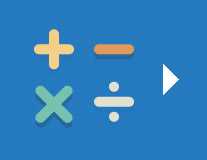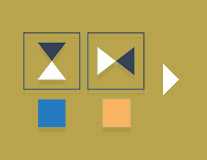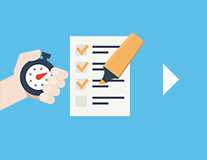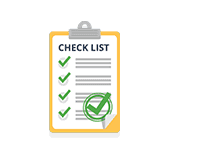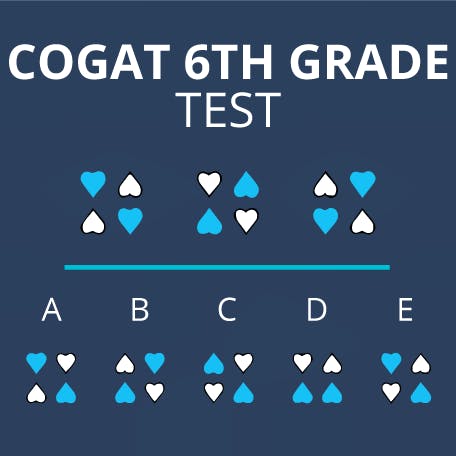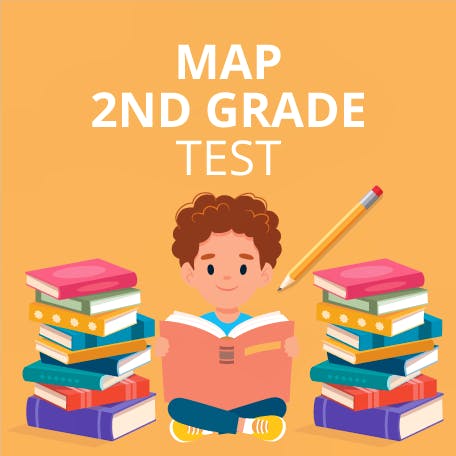A Map Test Grade 6 Study Guide: with Tips
Updated May 30, 2024
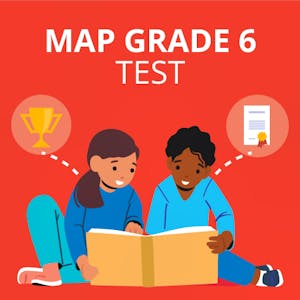

What Is the 6th Grade MAP Test?
The MAP Growth test system was created by educators from Oregon and Washington who established the Northwest Evaluation Association (NWEA) back in 1973.
Their goal was to create an assessment that could accurately measure and track academic progress in children to ensure they graduated high school with all the essential skills and knowledge they required.
In 2000, the first MAP Growth Test was published.
The test is administered in all grades and is based on a set of learning principles known as the Common Core Principles.
Today, the tests are used in more than 9,500 schools across the US.
MAP testing 6th grade is typically administered three times during the school year and assesses:
- Math
- Language
- Reading skills
- Some schools set a science test
The results are used by teachers to help them identify those students who need additional support and those who can be academically pushed out of their comfort zone.
The MAP 6th Grade Test Format
The MAP test for 6th grade is computer-adaptive and only includes topics that your child has been taught, so none of the questions should be unfamiliar or too difficult.
For example, if your child answers the first question correctly, the next one will be slightly harder. If they get that correct, the third question will be even more challenging. However, if they were to get it wrong, the following question would then become easier.
While your child will be familiar with the MAP test format, the sixth grade is a transitional year as they will either sit the 2 to 5 MAP test they are used to or the 6+ test.
The test areas are the same, but as you will see below, the questions will be more challenging.
The test they sit depends on their academic performance, so working through NWEA practice tests for 6th grade is recommended.
Regardless of the test version, all questions are multiple-choice and your child can expect 40 to 50 questions per section.
The test is not timed but is expected to last around three to four hours.
The 6th Grade MAP Math Test
The 6th grade math test covers:
- Operations and algebraic thinking – The primary skills measured are addition, subtraction, multiplication and division. Your child will need to work through numerical series, patterns and expressions.
- Measurement and data – Your child will be assessed on their ability to interpret information from different data sources and work through questions involving angles, lengths, areas and volumes.
- Numbers and operations – The main skills in this section are working with fractions and decimals with whole and multi-digit numbers.
- Geometry – To pass this section your child will need an understanding of how to answer questions using charts and graphs and how to work with 3D shapes and figures.
The 6th Grade MAP Language Usage Test
The language usage test focuses on technical skills including:
- Grammar – How well your child understands and uses basic grammar
- Writing – Your child’s ability to research, develop, write and revise a piece of text
- Mechanics – How well your child can write fully punctuated sentences with correct spelling and capitalization
The 6th Grade MAP Reading Test
The reading section contains different types of informal and formal writing and your child will be measured on:
- Vocabulary and word meaning – Recognizing the meaning of words and any relationships they might have
- Literature – Analyzing passages to identify themes, structure and purpose
- Informational texts – Understanding purpose, primary arguments and points of view
The 6th Grade MAP Science Test
It is also important to note that some schools administer a science test in the sixth grade.
Before starting any preparation, check with your child’s teacher to see which subjects they are sitting.
The science section will include topics such as:
- Life science – Molecules, organisms, ecosystems and evolution
- Physical science – Forces, motion, matter and energy
- Earth and space – Earth’s position in the solar system and how it resulted in human life
Example MAP Test Practice 6th Grade
Below are several example questions to help with your child’s 6th grade MAP test practice.
They are not taken from any past tests, nor are they likely to appear on your child’s test in the future.
The topics cover MAP math practice 6th grade questions, as well as practice questions for reading and language usage.
6th Grade MAP Math Practice Questions
1. A car mechanic needs to fit all his cars and equipment into one garage. He has found two garages he likes.
The first one measures 30 m by 15 m. The second one measures 45 m by 10 m. The mechanic thinks they are both the same size and decides to buy the cheapest one.
Which property has he used to decide they are the same size?
a) Perimeter
b) Area
c) Volume
d) Seller
2. Solve the following equation.
X + 35 = 118
a) X = 83
b) X = 80
c) X = 76
d) X = 88
3. Sam has X lollipops. Luke has 40 lollipops, which is 15 less than what Sam has.
If Sarah has ⅕ times as many lollipops as Sam has, how many lollipops does Sarah have?
a) 12
b) 3
c) 17
d) 11
1. Which word fits the following sentence best?
_______ parents called you and you had to go home.
a) You
b) Your
c) You’re
d) Yours
2. What is the main subject in the following sentence?
Popular in both Spain and South American countries, empanadas are a delicious pastry with a variety of fillings.
a) Spain
b) South America
c) Empanadas
d) Fillings

If you want 12-month access to all the practice resources for this test, our partner TestPrep-Online.com offers a Family Membership.
Family Membership gives you access to all the TestPrep-Online resources for the next 12 months. You will also get two separate accounts, which can be very helpful if you have two children preparing for their tests.
3. John is writing an essay about learning to play the guitar. Which of the following articles will help him with his research?
a) How guitars work
b) The best singers of all time
c) A guide to guitar notes and strings
d) Top 10 guitar players
1. What is the meaning of the simile in this sentence:
Mark’s will is like steel.
a) Mark’s will weighs a lot
b) Mark’s will is strong
c) Mark’s will is bending
d) Mark’s will is a metal
2. Eating healthy is vital for our health. Without fruit and vegetables, the body cannot get all the nutrients it needs to function. This means we will get tired quickly and we won’t be able to think as fast.
Which word has the same meaning as ‘vital’?
a) Essential
b) Good
c) Okay
d) Bad
3. Coffee is an important part of Australian culture, especially in Melbourne. Those who own coffee shops take their trade very seriously and search all over the world for the best coffee beans. However, in recent years several popular coffee shops have closed and been replaced by a coffee shop chain. People living in Melbourne are scared that their city is going to become overrun with the same coffee shop and small, independent coffee shops will fade away.
What does the word ‘scared’ suggest in this passage?
a) It suggests that owning a coffee shop is scary
b) It suggests that people living in Melbourne prefer independent coffee shops
c) It suggests Australians like coffee
d) It suggests that big coffee shop chains are scary
How to Pass the MAP 6th Grade Test
At ages 11 and 12, your child should have an understanding of the MAP test, but there are still things you can do to help them prepare for the 6th grade MAP test.
Step 1. Make the Learning Fun
Children learn so much faster when they are having fun, but as they get closer to their teenage years, they might not be as interested in games.
Check forums such as Reddit and Quora for advice on how to keep 12-year-olds interested in learning and for 6th grade MAP testing practice.
Their teachers will also have some tips, so be sure to ask them as well.
Step 2. Familiarize Your Child With the Test Format
By now your child should be used to the test format but working through a 6th grade NWEA practice test is a great way to refresh their memory.
Step 3. Take Online Practice Tests in a Testing Environment
Completing NWEA practice tests for 6th grade under test conditions is the best way to prepare.
Your child is expected to complete each section in around an hour, so working under timed conditions without the pressure of a real result will help them understand how long they have to spend on each question.
Completing 6th grade MAP test practice questions is especially important if your child is sitting the 6+ MAP test version for the first time.
Step 4. Rest and Eat Well Before the Exam
Tiredness, dehydration and hunger all slow cognitive thinking and attention spans. Ensure your child sleeps well, drinks water and eats healthy foods – especially the night before the test.
Step 5. Don’t Pressure Your Child
We all want our children to succeed. However, putting them under pressure and getting frustrated when they make mistakes will only turn them away from the learning process.
Step 6. Invest in a Preparation Pack
There are lots of 6th grade MAP test practice websites for you to find information and example questions. But if you feel you or your child need additional support, a paid package like the ones on TestPrep-Online might be worth the investment.
Step 7. Develop Weaker Areas
By 6th grade, your child will know what school subjects they like and dislike. As much as they might not want to, dedicating more time to their weaker subjects will improve their overall performance.
The 6th-grade math test is considered far more challenging than the reading and language use sections. If your child isn’t particularly good at math, completing more MAP math practice 6th grade and developing mental arithmetic skills will considerably help their performance and confidence.
The 6th grade MAP test is a multiple-choice, computer-adaptive academic test designed to measure a student’s progress in math, language use and reading.
It is administered three times a year; in the fall to benchmark, in winter to track progress and in the spring to assess overall development.
As the 6th grade is the first time students will be sitting the 6+ MAP test, some will find it more challenging than the 2 to 5 version.
However, none of the questions include topics students haven’t studied and the adaptive nature means they will only answer questions they are capable of answering.
You can prepare for the 6th grade MAP test on websites such as TestPrep-Online where you can find MAP testing practice 6th grade questions.
The MAP test for 6th grade assesses math, language use and reading skills.
In the math section, you can expect to be assessed on adding, subtracting, multiplying and dividing fractions and decimals, and reading and interpreting information from charts and graphs.
Language use measures your understanding of grammar, punctuation and spelling.
Reading assesses how well you can read, understand and interpret different types of text.
No, the 6th grade MAP test is not timed. However, students are expected to finish each section within an hour.
No, you cannot fail the 6th grade MAP test. The test is designed to track and measure your academic performance throughout the year.
You can get practice samples for the 6th grade MAP test on websites such as TestPrep-Online.
The purpose of the 6th grade MAP test is to see how well students are academically performing and developing.
The fall test sets the benchmark for the rest of the school year.
The winter test measures how well the student has performed so far in the sixth grade. The spring test assesses overall performance and determines if the student is ready for seventh grade.
There are between 40 to 50 multiple-choice questions on the 6th grade MAP test.
You can get free and paid study guides for the 6th grade MAP test on websites such as TestPrep-Online where you can find 6th grade math MAP test practice questions, reading practice questions and language use practice questions.
Final Thoughts
As the MAP Growth test is administered so often, preparing for and taking these tests shouldn’t be an unfamiliar process.
While the 6+ version might be more challenging than the one your child is used to, the preparation and process is still the same:
- Make a study schedule
- Focus on developing weaker areas
- Complete practice questions
- Remember the test is designed to track progress



